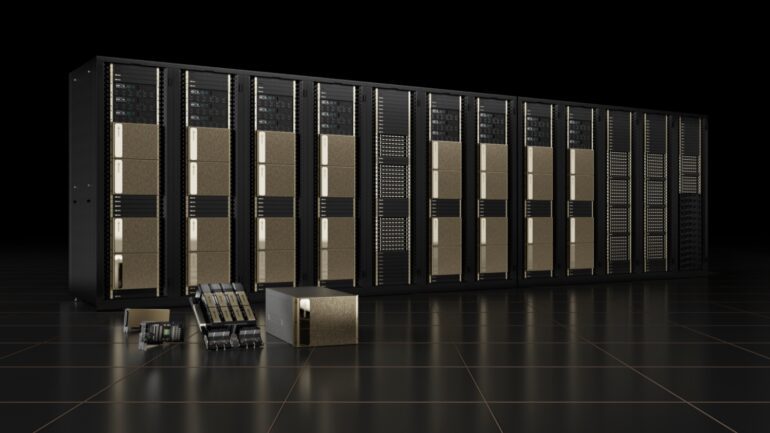TL;DR:
- HPE and NVIDIA jointly unveil a supercomputing solution for GenAI.
- The solution accelerates AI model training and tuning by 2-3 times.
- It leverages NVIDIA Grace Hopper GH200 Superchips and HPE Cray supercomputing technology.
- Key features include new software tools for AI applications and customization of models.
- Liquid-cooled supercomputers and accelerated resources enable scalability for AI workloads.
- The collaboration aims to drive breakthroughs in generative AI across industries.
Main AI News:
In a strategic move towards accelerating the GenAI landscape, Hewlett Packard Enterprise (HPE) has introduced a groundbreaking supercomputing solution designed to empower large enterprises, research institutions, and government organizations in their quest to enhance AI model training and tuning, all while safeguarding their valuable private data sets. The GenAI supercomputing “turnkey” solution is poised to revolutionize the field, promising to boost training speeds by a remarkable two to three times. This game-changing innovation is set to hit the global market in December 2023.
At the heart of this transformative solution lies the formidable power of NVIDIA Grace Hopper GH200 Superchips, seamlessly integrated with HPE’s cutting-edge Cray supercomputing technology, leveraging the same architecture found in the renowned HPE Frontier supercomputer. This technological marvel comprises key components, including novel software tools that facilitate the creation of AI applications, customization of pre-built models, and the empowerment to develop and modify code.
Fuelled by liquid-cooled supercomputers and an arsenal of accelerated compute, networking, storage, and services, the NVIDIA and HPE collaboration aims to provide organizations with the scalability and performance capabilities required to tackle colossal AI workloads. These encompass intricate tasks like Large Language Models (LLM) and deep learning recommendation model (DLRM) training, ultimately unlocking the full potential of AI at an unprecedented pace.
Justin Hotard, Executive Vice President and General Manager of HPC, AI, and Labs at HPE, emphasized the significance of tailor-made solutions for the AI landscape, stating, “The world’s leading companies and research centers are training and tuning AI models to drive innovation and unlock breakthroughs in research, but to do so effectively and efficiently, they need purpose-built solutions. To support generative AI, organizations need to leverage solutions that are sustainable and deliver the dedicated performance and scale of a supercomputer to support AI model training. We are thrilled to expand our collaboration with NVIDIA to offer a turnkey AI-native solution that will help our customers significantly accelerate AI model training and outcomes.”
Ian Buck, Vice President of Hyperscale and HPC at NVIDIA, echoed this sentiment, highlighting the transformative potential of Generative AI across industries: “Generative AI is transforming every industrial and scientific endeavor, NVIDIA’s collaboration with HPE on this turnkey AI training and simulation solution, powered by NVIDIA GH200 Grace Hopper Superchips, will provide customers with the performance needed to achieve breakthroughs in their generative AI initiatives.”
The synergy between HPE and NVIDIA, as exemplified by this supercomputing solution, promises to usher in a new era of GenAI innovation, offering organizations the tools they need to push the boundaries of artificial intelligence research and application.
Conclusion:
The introduction of this cutting-edge GenAI supercomputing solution signifies a major step forward in the AI market. It addresses the pressing need for accelerated AI model training and customization, providing organizations with the tools to unlock AI’s potential at an unprecedented pace. This partnership between HPE and NVIDIA is poised to reshape the landscape of generative AI, offering sustainable, high-performance solutions that will drive innovation and breakthroughs in research and application across various industries.

